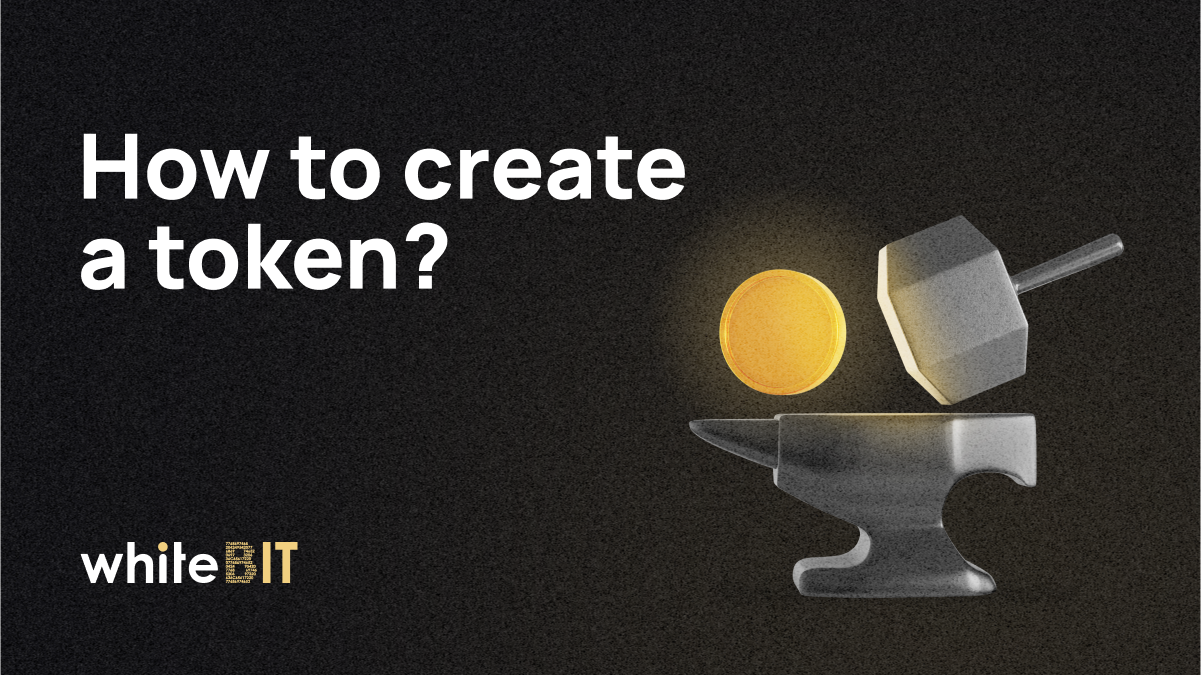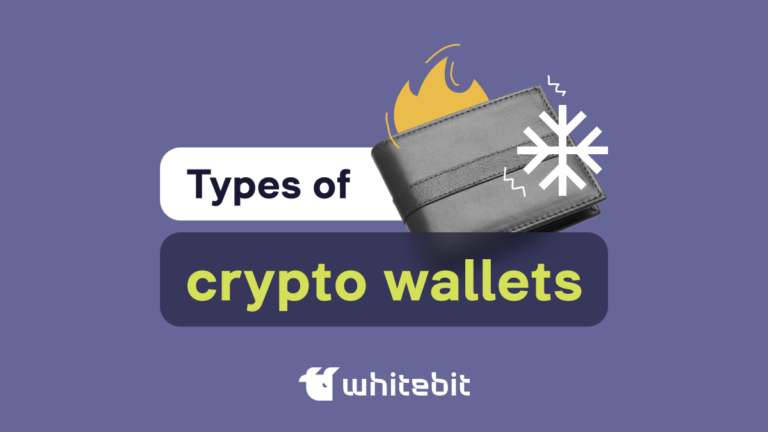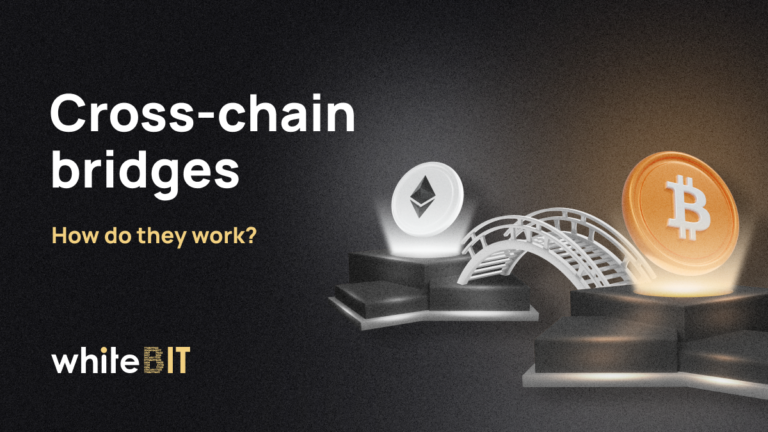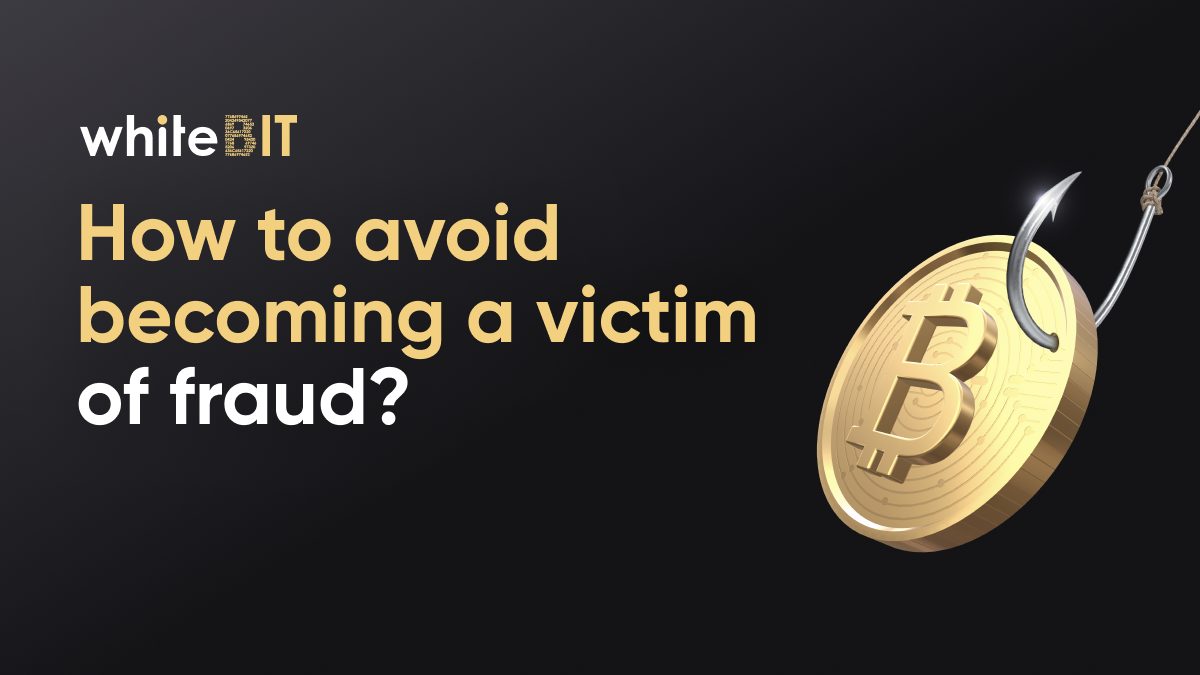What Is a Stablecoin in Cryptocurrency?
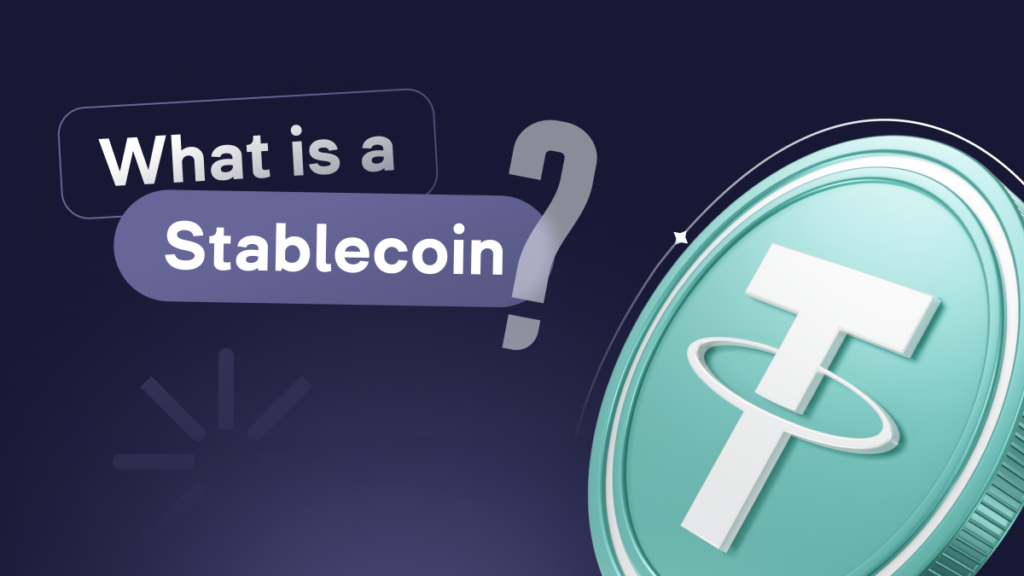
Content
- How Do Stablecoins Work?
- How the Price of Stablecoins Is Controlled?
- What Are Stablecoins Used For?
- Types of Stablecoins
- Examples of Stablecoins
- Altcoins vs Stablecoins: What Is the Difference
- Disadvantages and Benefits of Stablecoins
- How to Create a Stablecoin?
- How to Earn Interest on Stablecoins?
- How to Buy Stablecoin on WhiteBIT?
- Future of Stablecoins
- Conclusion
- FAQ
Centralized control, high transfer fees, lack of transparency, and the risk of counterfeiting are just a few problems people face in fiat currencies. With most cryptocurrencies subject to extreme fluctuations, the market needed a decentralized asset with a stable value. This asset could not be counterfeited, and transactions would be transparent and not burdened by high fees.
This is where stablecoin comes into play — a cryptocurrency whose market value is tied to the value of a particular asset. For example, the Tether stablecoin (USDT) rate equals the US dollar: 1 USDT = 1 USD. Other assets can also back stablecoins or have no collateral at all.
Unlike traditional currencies, stablecoins can be transferred regardless of the recipient’s geographic location and time of day. The transfer does not require approval or confirmation by a third party and takes a few minutes. Each transfer is recorded in the blockchain and has its unique identifier — a hash that can be used to track the transaction.
How Do Stablecoins Work?
Stablecoins were initially created to minimize risk in trading by allowing traders to quickly convert assets into a stable currency during periods of market volatility. This reduced losses from cryptocurrency fluctuations and eliminated the commissions and waiting time to exchange into fiat. Over time, stablecoins have expanded beyond trading, finding use in various financial transactions and decentralized applications.
How the Price of Stablecoins Is Controlled?
The binding of stablecoins to assets is achieved using fiat currency reserves in bank accounts, precious metal reserves, smart contracts, or algorithms without direct asset backing. It all depends on the type of stablecoin. For example, when Tether issues new USDT coins, they must provide the appropriate amount of US dollars or its equivalent in collateral. For every USDT stablecoin issued, Tether must hold assets equal to or greater than its reserve value to maintain an exchange rate of 1 USDT = 1 USD. These assets include cash, treasury bills, loans, and other securities.
Stablecoin price can be maintained by:
- Supply regulation: Mechanisms that control the amount of tokens in circulation to adapt to changes in supply and demand, keeping the price stable. This may include issuing new tokens or redeeming them to adjust the overall supply in the market.
- Reserve Assets: Maintaining and verifying sufficient assets reserves to which the stablecoin is linked, securing each token issued. This provides trust and confidence that the stablecoin can be exchanged for the appropriate collateral value.
- Audit and Transparency: Regular audits and reporting provide transparency and confirmation of reserves, critical to maintaining user trust and stability in the stablecoin’s value.
What Are Stablecoins Used For?
Stablecoins play an essential role in the crypto economy, offering price stability and protection from volatility. In addition, they provide liquidity on cryptocurrency exchanges and facilitate the exchange of assets. Stablecoins crypto also increases access to global financial markets for users in different countries, including those with limited access to banking services. In addition, they are a vital element in decentralized finance (DeFi), providing opportunities to borrow, lend, and generate income without intermediaries. Stablecoins facilitate international transfers by offering fast and inexpensive transactions, while blockchain technology makes them transparent and secure.
Types of Stablecoins
Centralized Stablecoins
Centralized stablecoins are a type of stable coin managed by a single organization or multiple institutions. These stablecoins can be divided into two main categories: fiat (fiat-backed stablecoins) and commodity (commodity-backed stablecoins).
Fiat
Fiat-backed Stablecoins are usually “pegged” to currencies such as the U.S. dollar, euro, or Chinese yuan at a one-to-one ratio. This means that for each stablecoin issued, there is an actual unit of the corresponding fiat currency held in reserve. It is the issuer’s responsibility to maintain this reserve and ensure the exchange of the stablecoins.
Examples of fiat stablecoins include USDT (Tether), USDC (USD Coin) — a dollar-backed stablecoin, EUROC — an ERC-20 standard stablecoin linked to the euro, and UAHg — the first Ukrainian stablecoin backed by the Ukrainian hryvnia.
Commodity
Natural commodities back commodity stablecoins. For example, a stablecoin tied to gold, silver, or oil. The value of these stablecoins is directly linked to the value of the commodity backing them, which implies that behind each such stablecoin is a certain amount of actual commodity in reserve. For example, PAX Gold (PAXG) and Tether Gold (XAUT) are gold-backed stablecoins.
Decentralised Stablecoins
Decentralized stablecoins are divided by how they maintain price stability: through the provision of cryptocurrency reserves or algorithmic regulation of supply without direct asset provision. These mechanisms automatically manage the number of coins in circulation to maintain price stability, for example, by burning coins or issuing new ones in response to market fluctuations. Unlike centralized stablecoins, decentralized stablecoins rely on innovative technological approaches.
Cryptocurrencies
Cryptocurrency stablecoins are backed by collateral in the form of other cryptocurrencies. They work like this: users deposit cryptocurrency as collateral and receive stablecoins. Smart contracts are used to keep the price of the stablecoin stable. They automatically manage reserves: if the cost of a stablecoin falls below its face value, the system reduces the number of coins in circulation, and vice versa. One of the brightest examples is DAI. It is a cryptocurrency-backed stablecoin where users invest cryptocurrency as collateral to receive Dai, the price of which is stabilized against the US dollar through automatic intelligent contract management.
Unsecured
Unsecured stablecoins are a type of algorithmic stablecoins that are not directly backed by assets such as fiat money or cryptocurrencies. Instead, their price stability is achieved through complex algorithms that regulate the supply of coins on the market.
Algorithmic
Algorithmic stablecoins are an innovative cryptocurrency that uses algorithms and smart contracts to maintain value stability without requiring collateralization with traditional assets. They are used in trading and DeFi applications, providing a decentralized way to store value. Significantly, their stability can depend on user actions and the efficiency of algorithms, which can lead to price fluctuations. The benefits are decentralization, investment efficiency, and blockchain protection, while the stablecoins and risk are related to the potential loss of stability and systemic dangers of DeFi.
Examples of algorithmic stablecoins include Terra (LUNA and UST), which is facing a crisis; Ampleforth (AMPL) with automatic bid adjustment; Frax (FRAX), combining collateral and algorithms; and Empty Set Dollar (ESD) and Dynamic Set Dollar (DSD) adjusting its bid to stabilize the price.
How Are They Different?
Stablecoins in cryptocurrency differ in their collateralization and stabilization mechanisms. Centralized stablecoins back their value with fiat currencies or tangible assets managed by a central issuer. Decentralized stablecoins maintain value using cryptocurrencies as collateral and are automatically managed through smart contracts. Algorithmic stablecoin, without physical collateral, stabilize value through algorithmic supply regulation, relying on software mechanisms to maintain value.
Examples of Stablecoins
The stablecoin market cap reflects the total value invested in these assets, underscoring their importance and growing influence in digital finance. Let’s explore some of the most popular stablecoins.
Tether (USDT)
USDT was one of the pioneers among stablecoins and is now widely used in the cryptocurrency industry. USDT and other assets, including company loans to affiliates and other investment products, back each USDT token. Tether is used on cryptocurrency exchanges for trading, hedging volatility, and as a reliable means of preserving capital.
USD Coin (USDC)
USDC is a stablecoin created by CENTRE, a consortium founded by Circle and Coinbase. Backed by 1-to-1 US dollars, USDC is held in bank accounts and is highly transparent. This stablecoin is regularly audited to ensure it is fully secured, making it a reliable choice for businesses and individuals.
Dai (DAI)
The Dai stablecoin differs from USDT and USDC because it is a decentralized stablecoin backed by a cryptocurrency collateralized through the MakerDAO platform. DAI aims to maintain its value equal to one USDT through smart contracts and governance mechanisms that allow users to pledge their cryptocurrencies in exchange for DAI. This provides flexibility and decentralization, differentiating DAI from most other stablecoins.
Altcoins vs Stablecoins: What Is the Difference
- Purpose and use: Altcoins are being developed to offer alternative capabilities and improvements over Bitcoin, covering a wide range of applications, from improved transaction capabilities to providing platforms for smart contracts and dapps. Stablecoins are created to provide price stability and are used as a medium of exchange and store of value.
- Volatility: One key difference is that stablecoins seek to minimize volatility by providing stable value, while altcoins, like Bitcoin, can experience significant price fluctuations.
- Collateralization and stabilization mechanisms: Stablecoins are collateralized by other assets or use algorithmic mechanisms to maintain their value. At the same time, altcoins function independently, and their value is determined by the market, with no direct link to other assets.
Thus, altcoins and stablecoins fulfill different functions in the cryptocurrency ecosystem: altcoins aim to develop new technologies and solutions, while stablecoins provide stability and security for digital currency transactions.
Disadvantages and Benefits of Stablecoins
| Pros | Cons |
| Stability. Stablecoins offer price stability, making them ideal for transactions, capital storage, and hedging cryptocurrency volatility. | Collateral Risks. Centralized stablecoins depend on the safekeeping and adequacy of reserves, which entails the issuer’s risk of insolvency or fraud. |
| Low transactions and ease of use. Stablecoin transactions are usually cheaper than traditional wire transfers or international payments. | Regulatory risk. Stablecoins may face unpredictable regulatory restrictions that could limit their use or even lead to their prohibition in some jurisdictions. |
| Global accessibility. Stablecoins are available to users worldwide, providing universal access to financial services without needing a bank account. | Dependence on the underlying assets. Stablecoins depend on the stability and availability of the underlying assets, which can lead to problems if they become impaired. |
| Transparency. Many stablecoins conduct regular audits to confirm collateral availability, contributing to user trust. | Technical Risks. Algorithmic stablecoins are subject to risks associated with bugs in software or smart contracts, which can lead to a loss of stability. |
How to Create a Stablecoin?
In developing an instruction on how to create a cryptocurrency, it is essential to emphasize that the initial stage involves choosing the concept of a stablecoin that defines its future: will it be an accurate asset-backed model or algorithmic management? Having defined the model, developers move on to creating smart contracts on the chosen blockchain platform, which requires in-depth programming knowledge and an understanding of the platform’s specifics. The next step is due diligence, which is critical for the cryptocurrency to meet all regulatory requirements and ensure its security and transparency. Thorough pre-launch testing helps identify and fix possible vulnerabilities, ensuring the stable operation of the project. The final stages include marketing efforts and post-launch monitoring, as well as establishing mechanisms for regular audits and updates to ensure the long-term viability of the stablecoin and its adaptability to changes in the market.
How to Earn Interest on Stablecoins?
Stablecoins can be stored in various cryptocurrency wallets, including hardware, software, and cryptocurrency exchange wallets. Hardware wallets offer the highest level of security by keeping private keys in a physical device that is not connected to the internet, thereby minimizing the risk of hacker attacks. Software wallets, which can be installed on a computer or smartphone, offer ease of use and quick access to funds but require extra precautions to ensure security. Exchange wallets provide ease of use and convenience for trading but put users at risk if an exchange is hacked. The choice of where to store stablecoins should be based on a trade-off between security and convenience, depending on the user’s needs.
One option for storing stablecoins is crypto lending from WhiteBIT. Lending stablecoins allows you to store cryptocurrencies like USDT safely and earn a profit. The user lends crypto assets under one of the available plans. The plan options differ regarding interest rate, term, and loan volume.
How to Buy Stablecoin on WhiteBIT?
The WhiteBIT crypto exchange allows you to buy stablecoin by opening an order. However, first, you must create an account, undergo verification, and replenish your balance.
To place a buy order, you need to:
- Select the “Trade” tab in the upper left corner of the menu and “Spot” in it;
- Select a trading pair from the list in the upper left corner, for example, USDT/UAH;
- Select the order type in the lower part of the terminal;
- Enter the desired amount of asset in the “Amount” field and press “Buy.”
The funds will be immediately credited to the balance.
Future of Stablecoins
The development of stablecoins will likely be characterized by deepening regulatory acceptance, technological innovation, and expanding applications, from decentralized finance to cross-border payments. This will lead to closer integration with traditional financial systems and may incentivize central banks to develop their digital currencies. As a result, stablecoins will become a critical link in financial inclusion and a bridge between cryptocurrency and traditional finance, playing an increasingly important role in the global economy.
Conclusion
In this article, we discussed how stablecoins work. Stablecoin is, in simple words, a fixed-price cryptocurrency, usually pegged to a currency or commodity to avoid large fluctuations in value. They provide a bridge between traditional fiat currencies and cryptocurrencies, allowing users to benefit from the best features of both worlds: the security and global accessibility of cryptocurrencies combined with the stability and real-asset peg of fiat currencies. Stablecoins offer new opportunities for passive income, trading, cross-border transfers, and decentralized finance (DeFi) while facing challenges related to regulation, collateral, and technological risks. Their future development is likely to focus on improved regulatory clarity, technological innovation, and integration with traditional financial systems, making them an even more critical element in the evolution of digital finance.
FAQ
Stablecoins are a type of digital currency whose value is tied to a stable asset such as fiat currency, commodities, or other cryptocurrencies to minimize price volatility.
Stablecoins are generally not considered securities, but their classification can depend on the specific structure and usage within different jurisdictions.
Stablecoins are suitable for transactions and hedging rather than high-return investments. To invest in stablecoin means embracing stability and reduced volatility, positioning it as a choice for transaction facilitation and hedging over seeking high returns.
Stablecoins differ from traditional assets by being digital and blockchain-based, offering faster transactions, lower costs, and global accessibility while pegged to stable assets like fiat currencies to minimize volatility.
The benefits of stablecoins include enhanced transaction speed, reduced costs, improved accessibility, stability, and the ability to facilitate global transfers without the volatility typically associated with cryptocurrencies.


